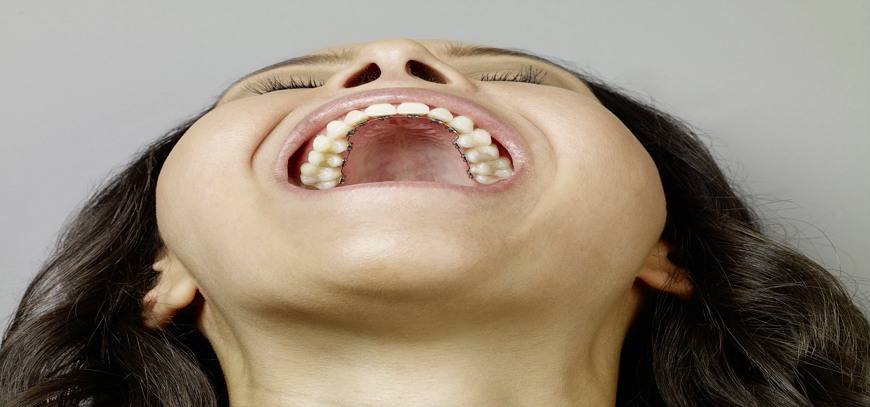Working Time
-
-
-
-
-
-
-
-
-
-
-
- Monday 09:00 – 18:00
- Tuesday 09:00 – 18:00
- Wednesday 09:00 – 18:00
- Thursday 08:00 – 17:00
- Friday 09:00 – 18:00
Saturday CLOSED
- Sunday CLOSED
-
-
-
-
-
-
-
-
-
-
Contact Info
Ask the Experts
Lingual Braces

Lingual braces are one of several options for discreet cosmetic teeth straightening. They’re virtually invisible when you’re smiling, eating or talking, so no one knows you’re wearing them. Therefore, although they’re suitable for all ages, this makes them ideal for adults who want to get their teeth straightened, or get rid of gaps in their teeth.
Sometimes called ‘hidden braces’, lingual braces are just like traditional braces except they’re fitted to the inside of your teeth rather than the front surface. So although they can’t be seen by other people, they’re still a type of fixed metal brace, made of brackets and wires.
Types of braces
If braces are indeed the solution for you, the dentist or orthodontist will prescribe an appliance specific for your needs. The braces may consist of bands, wires, and other fixed or removable corrective appliances. No one method works for everyone.
-
-
- Metal/traditional braces: Traditional braces are made of metal. They include brackets that are attached to the front of your teeth or bands that fit around each tooth, as well as flexible wires or arch wires that hold the brackets or bands together. Some braces also include rubber bands or metal ties that link the brackets to the wire. These bands create more pressure to help straighten and align your teeth. Sometimes, your orthodontist will have you wear a device called headgear at night. It provides added pressure to help straighten your teeth. You can put it on and take it off.
- Ceramic braces: The brackets in traditional braces are now also made in tooth-colored ceramic, so you don’t notice them as much. They can also be made with stainless steel, clear materials, or gold.
- Lingual braces: The brackets on these braces are attached to the backs of your teeth, facing your tongue. Lingual braces are harder to see.
- Clear aligners: You might also hear them called invisible braces. These are clear plastic trays that fit snugly onto your teeth. They use pressure to gently move your teeth into the correct positions and straighten your smile. You remove the aligners to eat, brush, or floss, but you should keep them in at least 22 hours each day for them to work. The orthodontist may also place tooth-colored attachments onto your teeth to hold the aligners in place.
- Damon braces combine innovative design with great looks. They’re small, discreet and, most importantly, brilliant at straightening teeth. Millions of happy patients have Damon braces to thank for their spectacular smiles.
- Smilelign is a clear brace system that uses innovative technology to create the smile you have always dreamed of. Smilelign allows you to straighten your teeth almost invisibly, enabling you to live, and smile, confidently.
By using a series of bespoke removable aligners, Smilelign lines up your teeth to make your smile straighter. Our powerful technology plots the exact direction your teeth need to move in to achieve optimal results. - Clear or near-invisible braces are tough, clear plastic aligners (moulds) or clear ceramic brackets that attach to your teeth that can, over time, straighten your smile. Since they’re clear, they’re nearly invisible, which means that people won’t necessarily know you’re straightening your teeth.
- Six Month Smiles works in a similar way to traditional braces with a system of clear brackets which are bonded to your teeth and tooth-coloured wires which are placed and adjusted by your dentist to align your teeth over time. However, Six Month Smiles are much easier for the dentist to fit than traditional braces. After an impression of your teeth is taken it is sent to the Six Month Smiles lab where custom trays are made that will assist your dentist in placing the new braces on your teeth.
-
The length of time that lingual braces need to be worn varies among patients. Most people will wear them between one and two years before they get the desired results. Extreme cases may take longer. The time that needed to wear lingual braces is generally right on par with traditional braces.
With lingual braces, the tongue is a common site of pain because of the location of the brackets. For some patients, the discomfort of lingual braces is significant. To improve patients’ comfort, more manufacturers are making lingual brackets smaller and smoother.
Lingual braces are just as effective as traditional braces, but have the advantage of being completely invisible. They can also be more effective than traditional braces and Invisalign in some instances.
